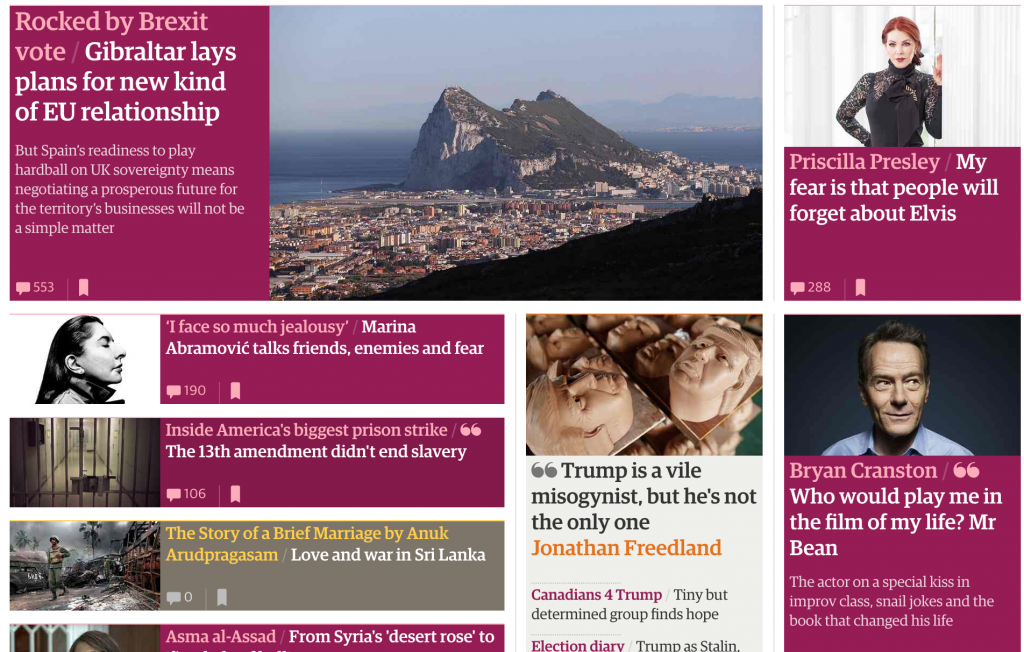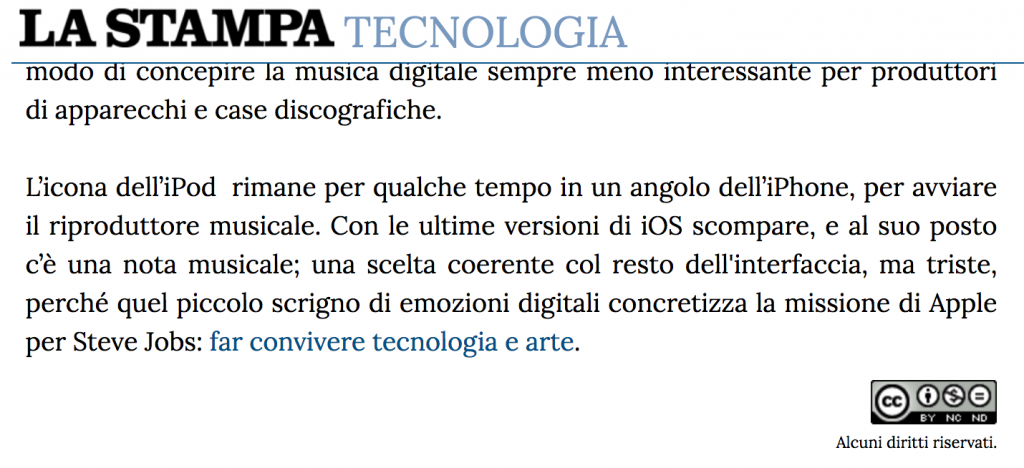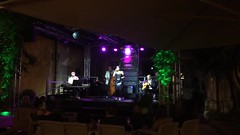Every day I read newspapers and I love doing so. Usually, I read them in their online editions. Rarely do I buy a paper, except perhaps on particular occasions, like Sundays’ New York Times, for instance.
So, I just though a salute to newspapers would be most appropriate for me at this point, when I devote so much time to the Web and its more or less open stuff, like blogs. In fact I religiously awaken every day with the rhythm of two papers: Puerto Rico’s El Nuevo Día, and Italy’s La Repubblica. I tend to scour titles and main articles and read a couple while having breakfast. On Sundays, I love reading a few editorials from both newspapers’ best journalists and then I love to navigate my “other” preferred newspapers, like The New York Times (I pay an educator subscription at $4/week!), The Guardian and El País. In fact, the Web has bestowed upon me the incredible gift of being able to read in real time newspapers from Italy from very afar.

Screenshot from The Guardian
This is a really healthy practice, and I do enjoy it greatly. I like to discover stuff with a little serendipity and often I end up opening one tab too many or quickly filling up my Instapaper.
Articles Do Not Carry Links
One thing I have to say, though, that resembles a common practice at news sites big and small: articles do not carry links. Yes, they are published on the Web (so they are Web pages) but rarely do they have links to other Web pages. It’s very difficult to find links on the Web these days!! I try and teach my students to enjoy and enrich the wealth of linked webs of media; to learn and speak (write) the language of the Web, namely a language of diverse (hyper-)media and http links. They end the semester with a good understanding of that. But news outlets? Nope, it seems that in the blue books of their best practices lie in gold:
Thou Shalt Not Place Links Upon Your Pages.
I understand why, but it’s a pity, and one big examples of an entire industry not appreciating the true nature of the Web. They then lament their diminishing sales.
Still, they (at least some) do a great job of navigating and curating the world for us. I end up enjoying my own curation from my best sources on the open Web, and I also appreciate very much the external curation made professionally by such outlets. It’s two worlds, and sometime they even coincide! I don’t count on social networks for my feed of newspaper articles. First because it’s much more pleasant to do that directly on their sites; second, since the news outlet sites are already well curated by professional journalists; and third because I don’t trust Facebook’s own curation and fear too much of the tunnel effect. It appears that this way I am also well defended from social networks’ tumor of fake or false news.
News Commons

Screenshot from La Stampa
One morning, while reading an Italian newspaper online, La Stampa, I discovered one little gem: I don’t know how diffused is the practice, but it’s very Web-like and promising in its vision. La Stampa puts all its content under a Creative Commons License (BY, NC, ND). It’s the first? I don’t know. How many news outlet do so?
Its’ so nice to return to society what society hath invested in you. Even if your purpose is to make money. I conclude there is a lot of improvement available for news outl;ets and good journalist work, solidly attached to the open arms of the Web.

[Featured image: flickr photo shared by illustir under a Creative Commons ( BY ) license]



